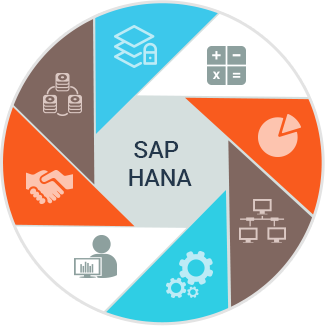Organizations need to be constantly on their toes to meet expectations of the fickle demands of customers. Today’s consumers look out for not just high quality, but several factors like easy availability, speed of delivery and of course, customer service. All these play equally important roles during purchase. As complexity increases, vendor responsiveness can drastically slow down. This can have a negative impact on the entire business and one wrong move can tarnish brand image and the entire supply chain. Profitability takes the biggest hit in such cases.
Beyond Quality
Consumers don’t focus just on quality. They also consider several other factors like easy availability, speed, and that all-important customer service during their purchase decisions. Supply chain networks have become increasingly complex. As consumer demands and tastes change, supply chain responsiveness simply slows down. It impacts supply chains deeply. But an ever-increasing amount of data is being generated throughout supply chains, which can be used to advantage.
The Network
Supply chains are therefore under more pressure from increasingly uncertain demand and supply patterns that are constantly changing. In order to maintain performance in this extremely competitive business environment, it is important to turn opportunities into revenue—with a sense of urgency. But at the same time, if your chain is not managed skilfully, running it can burn a hole in your pocket. Beyond that, global locations, lack of visibility, and lengthy decision processes make it difficult to plan and execute processes as desired.
Owing to growing customer demands and changing expectations, companies must become more responsive than ever before. To succeed, companies need to have a lucid understanding of their customers. They must be equipped with the right infrastructure to tap into Big Data and must have a collaborative process. Only then can they maximize their profits. Implementing such pointers is a difficult task, given that supply chain networks are spread around the globe, and there may be a huge network of partner suppliers.
Why SAP HANA?
The earlier OLAP & OLTP approaches for data storage had their limitations like lack of interchangeability, rigidity, and limited support from manufacturers. This resulted in database landscape becoming bulky, unwieldy, slow, and expensive to maintain. Moreover, the whole storage/analytics setup was never proactive. Fortunately, from then to now, innovative technologies have been developed to reduce execution time and empower. Companies can better analyze data in real time and provide vital business information in a network on demand.
SAP introduced HANA in 2011 as a database offering and seized the opportunity with products that needed in-memory computing like reporting tools, BI/BW, and planning tools like SCM on HANA.
SAP HANA addresses challenges around three themes:
- Control the supply chain in real time: Leverage complete access to and visibility of supply chain information to collaboratively create scenarios and simulate the effects of decisions in real time to increase supply chain profitability.
- Orchestrate the global supply network: Use true demand signals such as point-of-sale, social media, and market research data to sense customer demand signals immediately and respond in real time to build that demand into the planning processes.
- Execute the supply chain efficiently: With increased supply chain complexity and rising transportation costs, it becomes more difficult to deliver the perfect order. Efficient execution requires real-time visibility into logistics and business dynamics.
SAP HANA helps to increase revenue growth. It reduces working capital requirement and is up to 10x faster than traditional technologies. With SAP HANA, it was observed that an in-memory platform ensured enormous data in local memory could be analyzed. The results of complex analysis and transaction were available easily and quickly. SAP HANA also utilized advanced data compression techniques to store information in RAM, enabling better performance—10,000x faster than traditional disk-based systems. Consequently, business decisions were quicker and more informed.
SAP HANA supports business process innovation by resolving challenges related to planning and forecasting in the initial stage. It provides better in-depth visibility of the entire supply chain and helps manage supply chain exceptions and deviations. The result is better customer satisfaction. Furthermore, SAP HANA is deployable on premise and cloud. This helps us focus on the core competency area and outsource the rest to the best-of-breed service providers. This also helps bring down operations and ownership costs, simultaneously gearing up to generate customer loyalty through customer delight.





